Here's your solution. 400V, 4 ns.
https://www.avtechpulse.com/medium/avrf-4a/
The fact it costs $15k could hint at the fact that it is not a problem that can be easily solved with 2 active devices... hmmmmm...
Now, if you really insist...
Okay, you want to turn on a MOSFET really fast. The MOSFET gate is a capacitor. So you need to pump lots of current into it really fast. This means lead inductance is not your friend. This means leaded packages like TO-220 will only result in more pain. So, I searched DigiKey for a suitable part, and whaddya know, found one!
Tada!
(It is also available in TO220, if you want to take chances).
Now, this is not your average MOSFET. It's actually a cascoded GaN-FET. Ths cascode handles your other problem, Miller effect of Cgd capacitor, which at 400V is going to be truly humongous.
Notice how the gate charge is ludicrously low compared to your IRF840 (like 10x less). Also the rise/fall times are very fast (like 5ns).
And the TPH3206LSB version has the Source on the big fat cooling pad on the back, which means you can solder it to your ground plane to cool it. (If it had been the drain, extra capacitance on the output would have been introduced). Note the TO220 version also has the Source on the tab, so you can ground the heatsink and even remove the insulator.
I've never used a GaN-FET, but damn, this part looks like it means business!
With a solid layout and a bit of luck, it could work. Maybe... Well, you can always try... Although you should really work on your specs first, since we don't know anything about the load yet, so this is really a shot in the dark.
